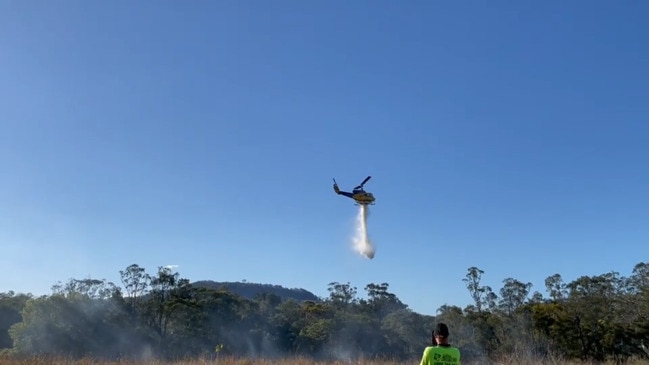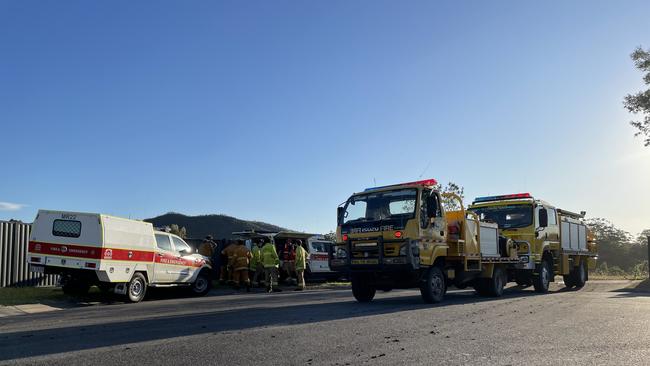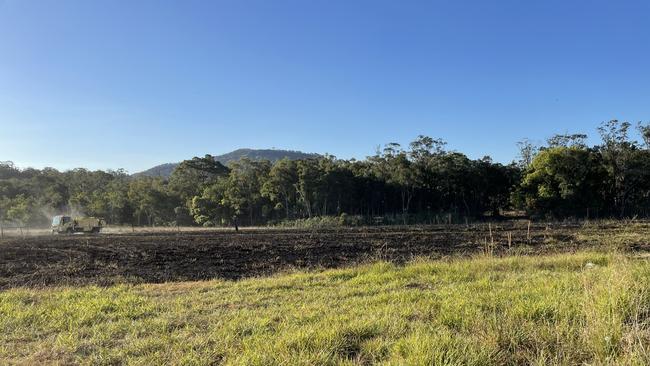Beerwah grass fire: Firefighters, aircraft protect homes from fire
Dramatic details from a grassfire that came within 50 metres of homes can be revealed, with the quick response from firefighters and waterbombing aircraft preventing structural loss.

Sunshine Coast
Don't miss out on the headlines from Sunshine Coast. Followed categories will be added to My News.
Water bombing aircraft and more than a dozen fire crews worked to protect homes and a school from a large grassfire at Beerwah on Tuesday afternoon.
The fire was burning behind Beerwah State School and moving towards homes near Bilenda Cl and Peachester Rd when water bombing aircraft arrived.
One resident – who declined to be named – said homeowners used their own garden hoses and buckets of water on the fire before crews arrived.
“We heard the crackling of the flames,” they said.

“They grabbed my hose and jumped the fence and got cracking into it before the fireys got here, they were all throwing buckets of water at it.”
The Beerwah resident said everyone was supporting each other and making sure they were OK.
“I suppose it’s just the community pulling together in times of need,” they said.
“The poor helicopters haven’t had a break.”
A Queensland Fire and Emergency Services media spokesman said the focus was on extinguishing the blaze and as of 4pm no properties were under immediate threat.

They said earlier in the afternoon homes were under threat but crews prevented the fire from causing any structural damage.
Caloundra Fire Station Inspector Matt Swanson said thanks to the quick response the fire was kept 50 metres away from homes.
“Off the back of (the Beerwah bushfire) last week I guess the community is a little bit anxious as soon as they see something starting start off,” he said.
“Initial appliances on the fire ground were able to pull the fire up before it got into the thicker bush.”
Up to 16 on-ground crews were on the scene as well as multiple water bombing aircraft.
It comes as Queensland is bracing for a nightmare bushfire season.
Spring temperatures above the annual average are forecast to be felt across the country according to the Bureau of Meteorology, nudging the risk of fire up in NSW, QLD, South Australia and the Northern Territory.





